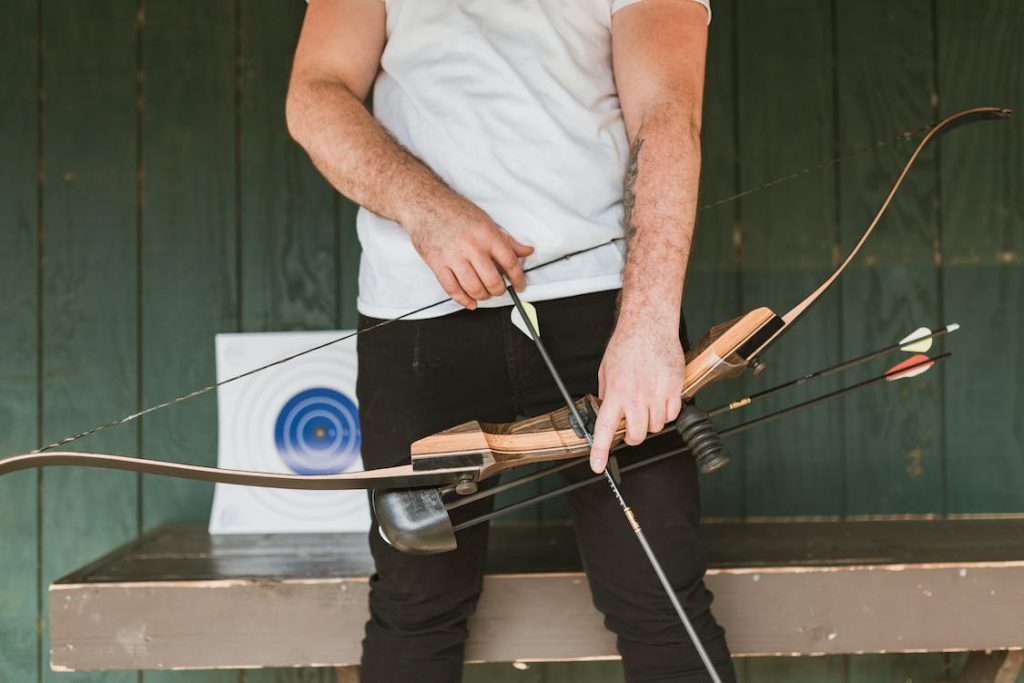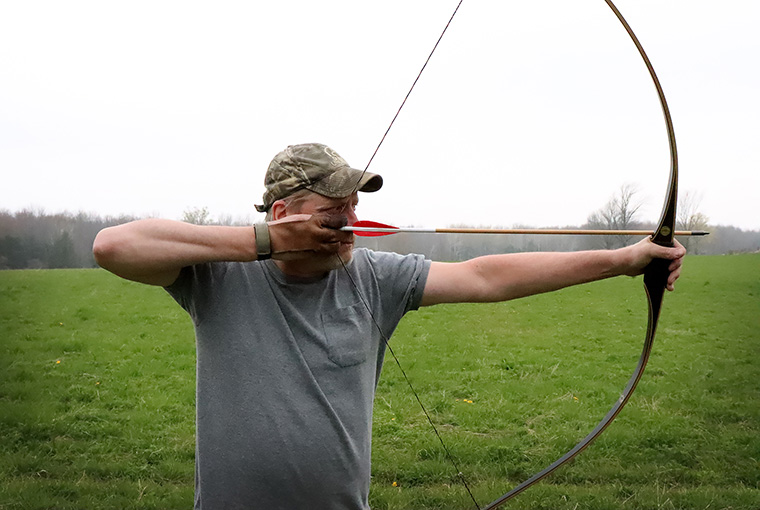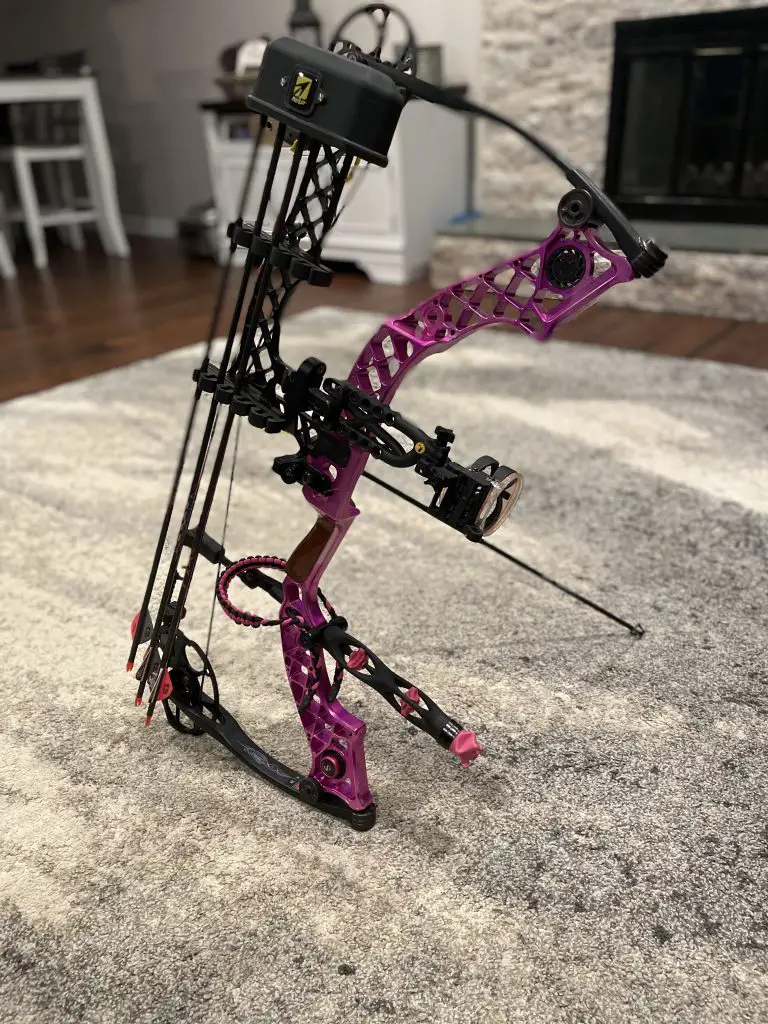Bow And Arrow Holding
Are you ready to step into the world of archery and discover the fusion of innovation and tradition that is the compound bow? Dating back to humanity’s earliest days, the bow has been a staple tool for hunting and warfare. However, the compound bow takes this ancient weapon to a whole new level. With its system of cables, pulleys, and cams, the compound bow allows archers to hold a high poundage at full draw and take their time aiming. In this guide, we’ll explore the key components of a compound bow, its numerous advantages, and how to choose the right one for you. Whether you’re a seasoned archer or just starting your archery journey, the compound bow offers power, accuracy, and adjustability, making it a thrilling and versatile choice. So, let’s dive into the world of bow and arrow holding and discover a whole new level of archery excellence.

What is a Compound Bow?
A compound bow is characterized by a system of cables, pulleys, and cams that assist the archer in holding a high poundage at full draw. Unlike traditional bows, where the draw weight increases as you pull back, compound bows reach a peak weight and then “let-off” to a lower holding weight, allowing the archer to take more time when aiming.
Key Components:
Limbs
Unlike the straight limbs of a longbow or the curved limbs of a recurve, compound bow limbs are much stiffer, providing the power behind the arrow. These limbs are typically made of composite materials such as fiberglass or carbon fiber, ensuring strength and durability.
Cams
The cams, also known as wheels or eccentric systems, are the oval-shaped devices that rotate as the bow is drawn. They dictate the draw cycle’s feel and the bow’s overall performance. The design of the cams affects factors such as speed, smoothness, and let-off. Different types of cams offer various advantages, so it’s important to consider your shooting style and preferences when choosing a compound bow.
Cables & Strings
Cables and strings play a vital role in the functioning of the cams. They transfer energy from the draw weight to the limbs and arrow during a shot. While the cables and strings may seem simple, they are engineered with precision to withstand the forces exerted by the compound bow. Regular inspection and maintenance of these components are necessary to ensure optimal performance and safety.
Riser
The riser is the central part of the bow, usually made of aluminum or carbon, to which limbs, sights, stabilizers, and other accessories are attached. It provides stability and balance to the entire bow. The riser’s design and material can affect the overall weight and feel of the bow, so it’s important to find one that suits your preferences.

Advantages of Compound Bows:
Power & Speed
One of the key advantages of compound bows is their ability to generate immense power, propelling arrows at tremendous speeds. The cams and limbs work together to store and release energy, resulting in a flatter trajectory and the ability to shoot arrows with more force. This power and speed make compound bows particularly effective for hunting and long-range shooting.
Accuracy
The mechanical advantage of compound bows, combined with the ability to hold the bow at full draw for a longer period, allows for better aiming and increased accuracy. The let-off at full draw reduces the strain on the archer, allowing them to steady their aim and take their time to release the arrow with precision. This level of control is especially valuable in competitive archery and situations where accuracy is crucial.
Compact Design
Another advantage of compound bows is their compact design. The shorter limb design makes them more manageable in tight spaces, such as hunting blinds or dense woods. This maneuverability provides archers with greater flexibility and ease of use, allowing them to navigate various shooting environments with ease.
Adjustability
Many compound bows offer a wide range of adjustability in terms of draw length and draw weight. This adjustability makes them suitable for archers of all ages, sizes, and skill levels. As an archer progresses or if multiple people use the same bow, adjustments can be made to accommodate different shooting styles and preferences. This versatility ensures that the bow can grow with the archer and adapt to their changing needs.
Choosing the Right Compound Bow:
Purpose
When choosing a compound bow, it’s essential to consider your purpose or intended use. Are you targeting big game, participating in target archery, or maybe bowfishing? Different shooting scenarios require different features and specifications. For example, a bow designed for hunting may prioritize power and speed, while a bow for target archery may prioritize stability and accuracy.
Draw Length
The draw length is the distance between your bow hand at full draw and the bowstring. It’s crucial to ensure that the bow fits your personal draw length. Incorrect sizing can affect accuracy and overall shooting performance. Finding the right draw length can typically be done through a professional bow fitting or with the help of experienced archers or instructors.
Draw Weight
Draw weight refers to the amount of force required to draw the bowstring back to its full draw length. It’s important to start with a weight you can pull back comfortably and consistently. Starting with a draw weight that is too heavy can lead to poor form, decreased accuracy, and potential injuries. As you build strength and improve your technique, you can gradually increase the draw weight to challenge yourself.
Let-off
Let-off is the percentage of weight reduced when the bow is at full draw. It allows the archer to hold the bow at full draw with less effort. A higher let-off allows for a more relaxed hold, increasing stability and accuracy. However, it’s important to find a let-off percentage that feels comfortable and controllable for your shooting style. Testing different let-off options can help you determine your preference.

Maintenance & Care:
Compound bows, with their intricate design, require regular maintenance to ensure optimal performance and longevity. Periodically inspect strings, cables, and cams for wear and tear. Look for fraying or damage that could compromise the bow’s integrity. Cleaning the bow, especially after exposure to dirt or moisture, is essential to prevent corrosion and damage to the components. Lubricate moving parts, such as the cam bearings, as needed to keep them functioning smoothly. It’s also advisable to have your bow professionally tuned at least once a year to address any potential issues and maintain its peak performance.
A Word on Safety:
The power of a compound bow should never be underestimated. Always prioritize safety when handling and shooting a compound bow. Ensure you are using arrows recommended for your specific bow’s draw weight. Using arrows that are too light or too heavy can impact accuracy and potentially lead to equipment failure. Additionally, always practice safe shooting by ensuring your shooting lane is clear and free from obstructions. Be aware of what lies beyond your target and never shoot in the direction of people or property. Following safety guidelines and practicing responsible archery will help prevent accidents and ensure an enjoyable shooting experience.

Conclusion:
The compound bow, since its invention in the 1960s, has revolutionized the world of archery. It seamlessly combines innovation and tradition, offering archers a powerful and accurate tool. Whether you’re a seasoned archer or just beginning your journey, the compound bow provides a unique and thrilling experience. With its power, speed, adjustability, and compact design, the compound bow has rightly earned its place as the preferred choice for many archers. So, grab your bow, set your sights, and embrace the exhilarating world of compound archery.








